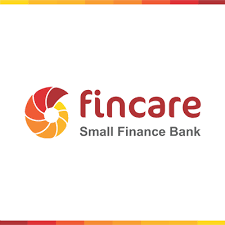Among the various segments in an economy, banks play an important role. They are the meeting place of depositors and borrowers, and capital is put to the best use because of them. Banks distribute loans to needy borrowers, thus keeping the economy’s growth wheel spinning. In this sense, growth in bank’s loan disbursement is essential for an economy’s growth. One such small finance bank, Fincare Small Finance Bank Limited has filed its draft prospectus with the SEBI to come up with an IPO. So let us discuss in detail, the company’s business prospects.
About the company

Fincare Small Finance Bank is a digital-first small finance bank with a focus on unbanked and under-banked customers in rural and semi-urban areas. According to CRISIL, Fincare Small Finance Bank had the highest growth rate in advances over FY18 to FY20 among its peers. As of December 2020, 92% of the bank’s customers were located in rural areas and 40% were new to credit. The bank has over 14 years of experience in providing microloans. The share of non-micro loans increased from 16% of gross loans provided as of FY18 to 21% of gross loans provided as of December 2020. As of December 2020, the bank had 2.68 million deposit accounts.
Fincare Small Finance Bank Limited IPO Details
Following are the details about the company’s IPO:
- The company has not yet come up with the IPO subscription dates.
- The company has not yet come up with its IPO price range, which will help in determining the bank’s valuations.
- The bank has a net asset value per equity share of ₹142.08.
Objectives of the IPO
Following are the objectives of the company’s IPO:
- The bank aims to utilize the net proceeds from the fresh issue towards increasing its Tier-1 capital base to meet its future capital requirements.
- Further, a small portion of the proceeds from the fresh issue will be used towards meeting the expenses in relation to the offer.
- Also, by coming up with an IPO, the bank expects to receive the benefits of listing its equity shares on the stock exchanges.
Key strengths
Following are the key strengths in the company’s business:
- The bank follows a customer-centric approach driven by digital banking and automation. The bank has a committed digital team of 84 members.
- The company has a multi-channel, low-cost distribution network with diversified geographic presence. As of December 2020, the bank had a pan-India network of 528 banking outlets and 108 ATMs.
- The bank has a fast-growing stable deposit base with a growing CASA franchise. The bank’s deposit customers have risen at a CAGR of 358% between FY18 and December 2020.
- The bank claims to have robust risk management policies leading to healthy asset qualities and low credit costs.
- The bank has a strong track record of financial and operational performance.
Key risks
Following are the key risks in the company’s business:
- Due to the Covid-19 lockdowns and a disrupted economy, banks would have to provide moratorium on loans to borrowers under RBI’s guidance. This could hurt the business profitability.
- Microloans comprised of 79.5% of the bank’s gross loan portfolio as of December 2020 which poses a concentration risk in a single segment.
- 73% of the bank’s gross loan portfolio is made up from four states, namely, Gujarat, Tamil Nadu, Karnataka, and Madhya Pradesh, which again poses a geographical concentration risk.
- 92% of the bank’s customers are rural borrowers. Any disruption in India’s rural economy could disrupt the bank’s business operations.
- The bank may face asset-liability mismatches, which can affect liquidity and its business.
Fundamentals of the company
Following are the fundamentals of the company:
- The bank’s total income grew from ₹350 crores in FY18 to ₹1215.7 crores in FY20. For the nine months ending December 2020, the bank’s total income was ₹998.3 crores.
- The bank made a loss of ₹97.5 crore in FY18. But in FY20, the bank posted a profit of ₹143.5 crores. For nine months ending December 2020, the bank’s profits were ₹103.9 crore.
- The bank’s net interest margin was pretty much stable between FY18 and FY20, hovering around 10.98%.
- For FY20, the bank’s return on assets stood at 2.52% and the bank’s return on equity stood at 18.41%.
- The bank’s cost to income ratio declined from 87.15% in FY18 to 58.19% in FY20.
- The bank’s gross NPA ratio declined from 1.05% in FY18 to 0.92% in FY20.
Peer comparison
The bank identifies AU Small Finance Bank, Bandhan Bank Limited, CreditAccess Grameen Limited, and Equitas Small Finance Bank, Ujjivan Small Finance Bank, Spandana Sphoorty Financial Limited, and Suryoday Small Finance Bank Limited as its peer group. Fincare Small Finance Bank has a return on net worth of 15.87%, which is better than majority of its peers.
Conclusion
These were all the relevant details of Fincare Small Finance Bank Limited. Investors should do their own due diligence before deciding to invest in the company’s IPO.






